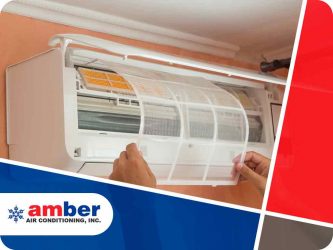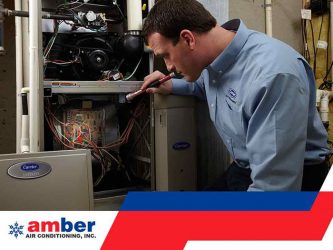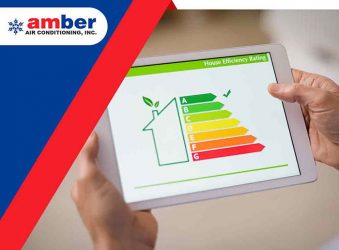Changing the HVAC filters is an important part of HVAC system care and maintenance. Neglecting to do so can reduce HVAC efficiency as well as affect your indoor air quality. Amber shares a look at what happens when you don’t change your heating and air conditioning filters.
Help, My Furnace Won’t Turn Off!
As March temperatures in Southern California are slowly rising up from cooler winter levels, homeowners are gradually shutting down their heating systems in preparation for spring. While we’re all looking forward to warmer weather in the days ahead, a number of homes will begin to display a common HVAC problem: a constantly running furnace. Amber Air Conditioning Inc. has resolved countless HVAC issues involving furnaces not shutting down or cycling on and off continuously. That’s why our professional technicians have decided to list below a few quick fixes that can help you out. Heat Exchange Problems With constant use, dirt and grime can build up in and around the heat exchange. This greatly reduces its capacity, while at the same time causes your furnace to consume more energy without providing any heating at all. You can avoid this issue by making sure that your HVAC system regularly gets seasonal maintenance. Air Filter Blockage Our pros […]
Why You Should Invest In an Energy Audit
There are many home improvements that can increase your home’s energy efficiency. Prioritizing which to do first should never be left to chance, which is why you should have an energy audit performed by a professional auditor before doing any home remodeling. Heating and air conditioning expert Amber Air Conditioning, Inc., shares why an energy audit may just be the most important thing you can do for your home. What Is an Energy Audit? During an energy audit, an auditor takes a look at everything that has to do with how your home consumes energy. This includes inspecting every appliance, every lighting fixture, and even small things such as power strips and smartphone chargers. The auditor also assesses components that might affect energy consumption, such as wall insulation, fenestrations and the integrity of your home’s ductwork. Problems such as leaks, insufficient insulation and inefficient appliances are noted and included in a detailed report. Remember to […]
The Environmental Benefits of Energy-Efficient HVAC Systems
The advent of energy-efficient HVAC systems has dramatically improved the way homeowners utilize their heating and cooling systems. In addition to providing savings on utility costs and improved performance, energy-efficient HVAC systems also have environmental benefits: Fewer Carbon Emissions Grid-based electricity is produced mostly from fossil fuels such as crude oil. More electricity consumed means higher direct carbon emissions, which, in turn, can be harmful to the environment. Therefore, households that use inefficient HVAC systems have a negative impact on the environment, and will continue to do so as long as they keep using the same. According to the Energy Information Administration, an average home spends almost half of its annual energy costs on heating and cooling alone. Making the switch to energy-efficient HVAC systems can have a long-term positive effect on your annual energy consumption. More importantly, your home’s carbon emissions and its environmental impact can be dramatically reduced. Ozone-Friendly Refrigerants You may have […]
How Thermostats Work
Thermostats are a small yet essential part of every modern air conditioner. It’s the “face” of your HVAC system, and with the right kind of thermostat, it can help improve the A/C’s overall efficiency. Amber Air Conditioning shares a closer look at how it works. How Do Thermostats Work? Most homeowners might be surprised to know that thermostats do not have anything that resembles a thermometer, despite being used to regulate your home’s indoor temperature. Instead, it relies on a much simpler mechanism: thermal expansion. Materials expand when exposed to heat, but at different rates. This principle is the backbone of the traditional thermostat: two strips of different metals, usually steel and copper, are fused together. The difference in expansion rates bends the strip as the temperature increases. This triggers a switch that turns on the air conditioner (or dampers, if you have a ducted system), which then begins pumping out cool air. As the […]












